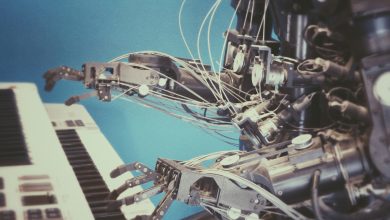In an era marked by economic uncertainty and rapid technological advancement, workforce reductions remain a common response for companies facing financial strain. Layoffs, however, come at a steep cost—not only to affected employees but also to organizational morale, reputation, and long-term productivity. As businesses seek more sustainable solutions, artificial intelligence (AI) has emerged as a powerful tool to optimize workforce management, aligning headcount with business performance and minimizing the risk of sudden layoffs.
The Cost of Layoffs and the Call for Proactive Solutions
The impact of layoffs extends far beyond individual job losses. Research from the Harvard Business Review indicates that widespread layoffs can lead to a 20% decline in job performance among remaining employees, as well as increased absenteeism and lower workplace morale. For industries such as banking and finance, where stability and trust are paramount, the stakes are particularly high. Avoiding mass reductions in force requires a proactive, data-driven approach that leverages predictive analytics and workforce optimization strategies.
Enter AI-driven workforce optimization. By analyzing complex datasets in real-time, AI systems can predict workforce needs, identify potential areas of inefficiency, and help organizations make strategic hiring and retention decisions. While some fear that AI could displace jobs, experts like Divyesh argue that its potential to prevent unnecessary workforce reductions may be its greatest strength.
AI as a Tool for Workforce Optimization
One of the key applications of AI in workforce management is predictive modeling, which allows businesses to forecast their headcount needs based on economic trends, financial performance, and market demand. AI-driven systems analyze patterns and offer actionable insights that enable leadership to make informed decisions about hiring, staffing, and resource allocation—long before layoffs become a consideration.
Divyesh, a senior data engineer specializing in AI solutions for workforce optimization, emphasizes the importance of aligning workforce growth with financial performance. “Reactive hiring and downsizing cycles often lead to inefficiencies and a loss of talent,” says Divyesh. “AI provides a proactive way to connect workforce planning directly to revenue projections and market demands, minimizing disruptions and maximizing organizational stability.”
Optimizing Workforce Costs with AI: A Practical Approach
In practice, AI-driven workforce optimization involves integrating data from multiple sources—financial projections, market trends, and human resource data—to create accurate headcount models. These models help organizations avoid over-hiring during periods of growth and ensure that staffing levels are aligned with long-term business goals.
One solution Divyesh has been involved in focuses on real-time headcount projections that link workforce growth directly to financial performance metrics. This approach allows leadership to make data-driven decisions that prevent overstaffing, reduce unnecessary costs, and maintain flexibility in response to changing market conditions.
“Effective workforce planning isn’t about cutting costs—it’s about optimizing resources,” explains Divyesh. “By leveraging AI, we can identify inefficiencies, predict future needs, and ensure that every hiring decision aligns with broader business objectives.”
Reducing Layoff Risks: AI’s Role in Employee Retention
AI’s role in workforce optimization extends beyond hiring and headcount adjustments. Advanced AI tools can analyze employee engagement, performance metrics, and job satisfaction data to identify areas where interventions are needed. By recognizing patterns of dissatisfaction, disengagement, or burnout, organizations can implement targeted retention strategies that reduce turnover and create a more resilient workforce.
According to Divyesh, AI-driven retention strategies are critical for building a stable work environment. “Layoffs often occur when organizations fail to anticipate shifts in employee needs or market conditions,” he notes. “AI allows us to be more responsive, addressing potential issues before they escalate and ultimately reducing the need for drastic measures.”
One practical application involves using AI to match employees with internal mobility opportunities based on their skills, career goals, and emerging business needs. This approach not only fills critical roles within the organization but also enhances employee satisfaction by offering clear pathways for career advancement.
Challenges and Ethical Considerations in AI Deployment
While AI offers immense potential for workforce optimization, its implementation is not without challenges. Integrating AI-driven systems into legacy infrastructure, overcoming data silos, and managing the ethical implications of algorithmic decision-making require careful planning and oversight. Ensuring transparency and fairness in AI recommendations is also critical, particularly in sensitive areas such as hiring and layoffs.
“AI must be deployed with a focus on ethical responsibility,” emphasizes Divyesh. “Transparency, accountability, and clear communication are essential to building trust and ensuring that AI-driven workforce decisions are fair, unbiased, and beneficial for all stakeholders.”
A Future-Oriented Approach to Workforce Management
As AI continues to evolve, its role in workforce management will become increasingly sophisticated. From predicting market trends to optimizing resource allocation and reducing layoff risks, AI-driven solutions offer a path toward a more stable, resilient workforce. By leveraging data and predictive analytics, organizations can shift from reactive cost-cutting measures to proactive workforce planning, fostering a culture of adaptability and growth.
“AI is not a silver bullet, but it provides a powerful set of tools for creating sustainable workforce strategies,” says Divyesh. “The goal is not simply to reduce costs but to align human capital with organizational needs in a way that benefits employees and businesses alike.”
Conclusion: A New Paradigm for Workforce Stability
In a world where economic uncertainty is a constant, AI-driven workforce optimization offers a compelling solution for minimizing layoffs and fostering organizational resilience. By harnessing the power of data and predictive modeling, businesses can make smarter, more strategic decisions that benefit both their bottom line and their workforce.
As Divyesh concludes, “The future of workforce management is data-driven, adaptive, and deeply human-centric. AI allows us to balance efficiency with empathy, ensuring that organizations remain resilient and employees have the stability they deserve.”



